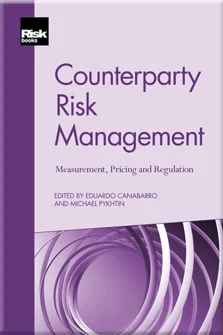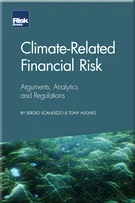Dynamic Stress Testing of Counterparty Default Risk
Greg Hopper
The Basel III Enhancements to Counterparty Risk Capital Charges
The Regulation of Counterparty Risk in Over-the-Counter Derivatives Markets
The Non-Internal Model Method for Counterparty Credit Risk
On Credit Valuation Adjustments and Regulatory Capital
American Monte Carlo: A Practitioner Approach
Best Market Practice for Calculation and Reporting of Wrong-Way Risk
Central Counterparty Risk
CVA Risk Management Post-Crisis
Re-Thinking CVA: Valuations, Counterparty Credit Risk and Model Risk
Should Derivatives Dealers Make A Funding Value Adjustment?
Adjoint Algorithmic Differentiation: Real-Time Counterparty Credit Risk Management in Monte Carlo Simulations
Stress Test of Counterparty Risks and Dynamic Hedging of the CVA
Dynamic Stress Testing of Counterparty Default Risk
Collateral: Modelling, Pricing and Optimisation

Stress testing has become much more widespread following the events surrounding the financial crisis of 2007–9. While much attention has been devoted to the lessons learned in market risk stress testing, comparatively less attention has been focused on counterparty credit risk stress testing. Credit stress testing before the financial crisis had been oriented towards understanding how default risk behaves in a severe economic downturn. While that question is still very important, the financial crisis made clear the importance of understanding how the mark-to-market price of counterparty credit risk changes with extreme market conditions.
The mark-to-market framework in which the price of counterparty risk is calculated is called the credit valuation adjustment (CVA) process. The calculation of CVA allows for the counterparty credit risk of derivatives to not only be marked-to-market but also hedged daily. The daily hedging is a dynamic process in which the amount of the hedges is adjusted for changes in underlying market variables, the credit quality of the hedging bank and the counterparty and the jump-to-default risk of the counterparty. At any point in time, the cumulative
Copyright Infopro Digital Limited. All rights reserved.
As outlined in our terms and conditions, https://www.infopro-digital.com/terms-and-conditions/subscriptions/ (point 2.4), printing is limited to a single copy.
If you would like to purchase additional rights please email info@risk.net
Copyright Infopro Digital Limited. All rights reserved.
You may share this content using our article tools. As outlined in our terms and conditions, https://www.infopro-digital.com/terms-and-conditions/subscriptions/ (clause 2.4), an Authorised User may only make one copy of the materials for their own personal use. You must also comply with the restrictions in clause 2.5.
If you would like to purchase additional rights please email info@risk.net










